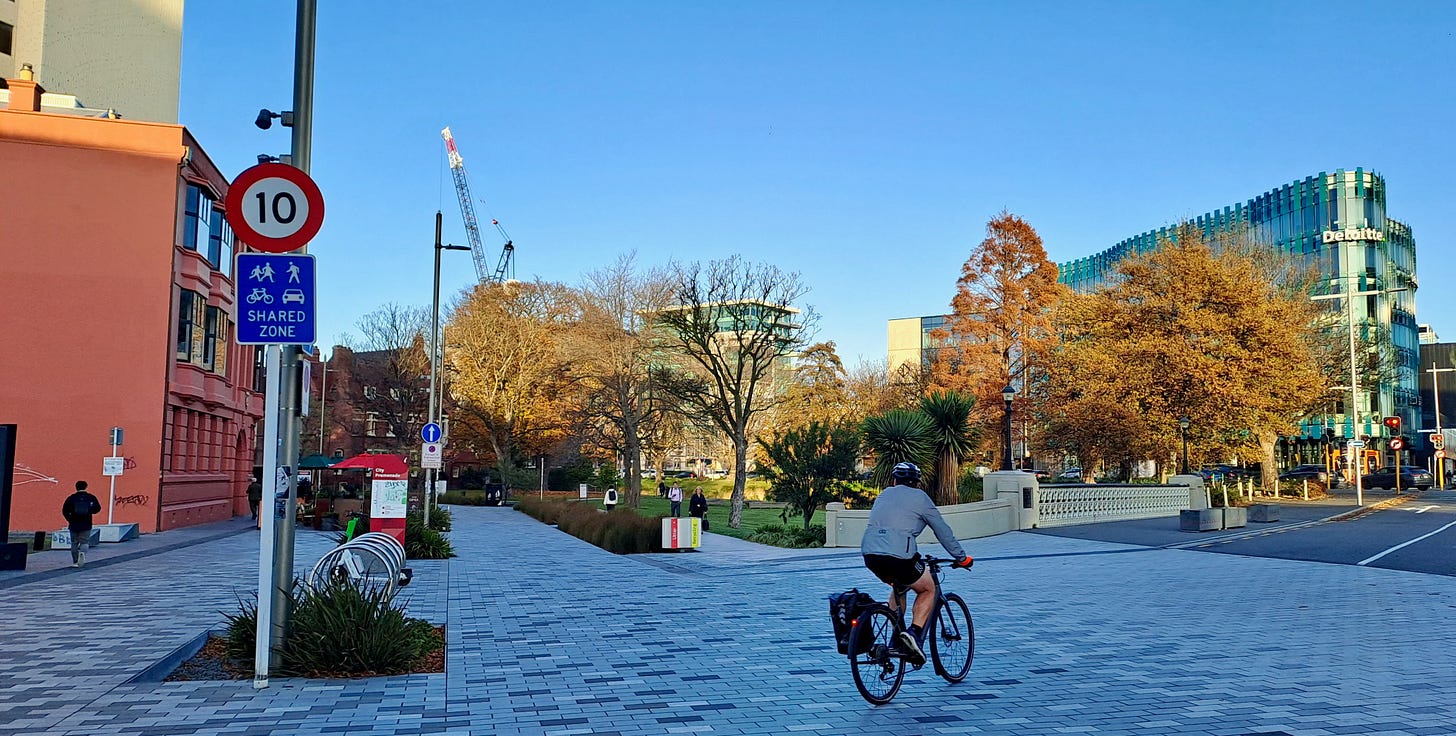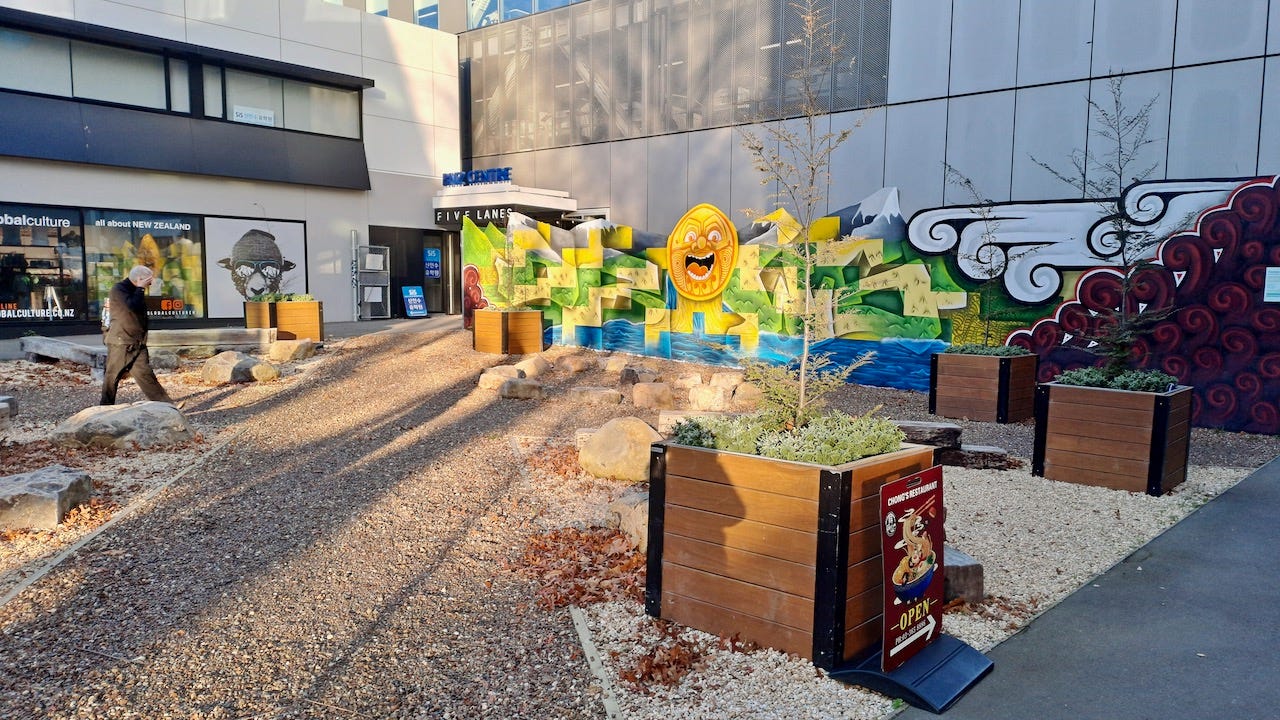No, New Zealand is not Amsterdam ...
But there is still so much we can do to make our cities and towns liveable

And Ōtautahi Christchurch can prove it - as I discovered on a recent trip there to attend the Transport Research Network Symposium.
Since the quakes I have visited the city I once called home a handful of times, but it was this time that I noticed some significant changes to share road space in a more equitable and safe way with people not operating one-tonne metal boxes on wheels. These measures, alongside some wonderful examples of place-making (such as pocket - and full size - parks, public realm spaces, murals and other public art) and more varied inner city residential development, has brought an unmistakable vitality and vibrancy to the Christchurch CBD.
It sounds like some of the speed reductions within the four avenues are under threat from recent government mandates to reverse recent speed reductions, but the city’s decision-makers are holding out as much as they can within the new rules.
And they have plenty of evidence to bolster their resolve. Since the advent of affordable motor vehicles in the 1950s, our cities and towns have been designed around car mobility, and the harm to people, places and the planet continues to multiply, as illustrated in the diagram (Miner et al, 2024) below.
Adding to this is our recent love affair with SUVs (significantly more lethal than the smaller metal box variety of car) to tootle around town to pick up the kids and the groceries, as well as the use of bigger and bigger trucks to move freight around - at the cost of road damage (almost all road pavement wear is caused by trucks), road safety (trucks are around three times more lethal than cars in a road accident), climate, noise and air pollution. Today, due to successive government under-investment in rail and policies favouring the trucking industry over rail, about 87% of all freight is transported by road, with less than 13% by rail, despite it being many times more energy and emissions-efficient as well as much safer.

But these shining examples in Ōtautahi Christchurch shows that we can have it all: more space for people and nature, more active and healthy people, less climate, air and noise pollution, less death and injury from motor vehicles - and, can it be true?? - yes, more vibrant urban places - with bustling cafes, restaurants and shops.
So maybe we need to start looking at the examples here in Aotearoa of initiatives to improve liveability in our own towns and cities, and give strength and encouragement to the decision-makers who have held their resolve in the face of considerable backlash, knowing that what they are doing is right. And keep on reminding ourselves that while we are operating in an ‘evidence-optional’ policy environment at the moment (as one symposium presenter brilliantly put it), this too will pass.
To all those people working to make our cities and towns more liveable, kia kaha.







The Dutch also have one of the highest rates of car ownership in the world. I’m not sure if they love SUVs as much as NZers. The point being we need to use the right mode in the right situation. The Dutch have transitioned away from using cars in Cities and so should we. Hopefully we can also have better “mobility as a service” options so people can affordable to rent the type of vehicle they need for a particular situation. If it sounds fanciful to car owning Kiwis our daughter, like many others flew a few hours west to live and they happily do just that.
I am so grateful for the transport alternatives Otautahi's councils have given us. My daily one way commute of 45km includes the car, bus and bike and its way more productive than car only. I can work on the bus and I love ride. It takes about the same amount of time as using the car and it's daily cost is about 25%. Then there is the bonus of being able to finish the day with a 35km ride back to the car, 80% of which is on separated cycle paths. I love it.